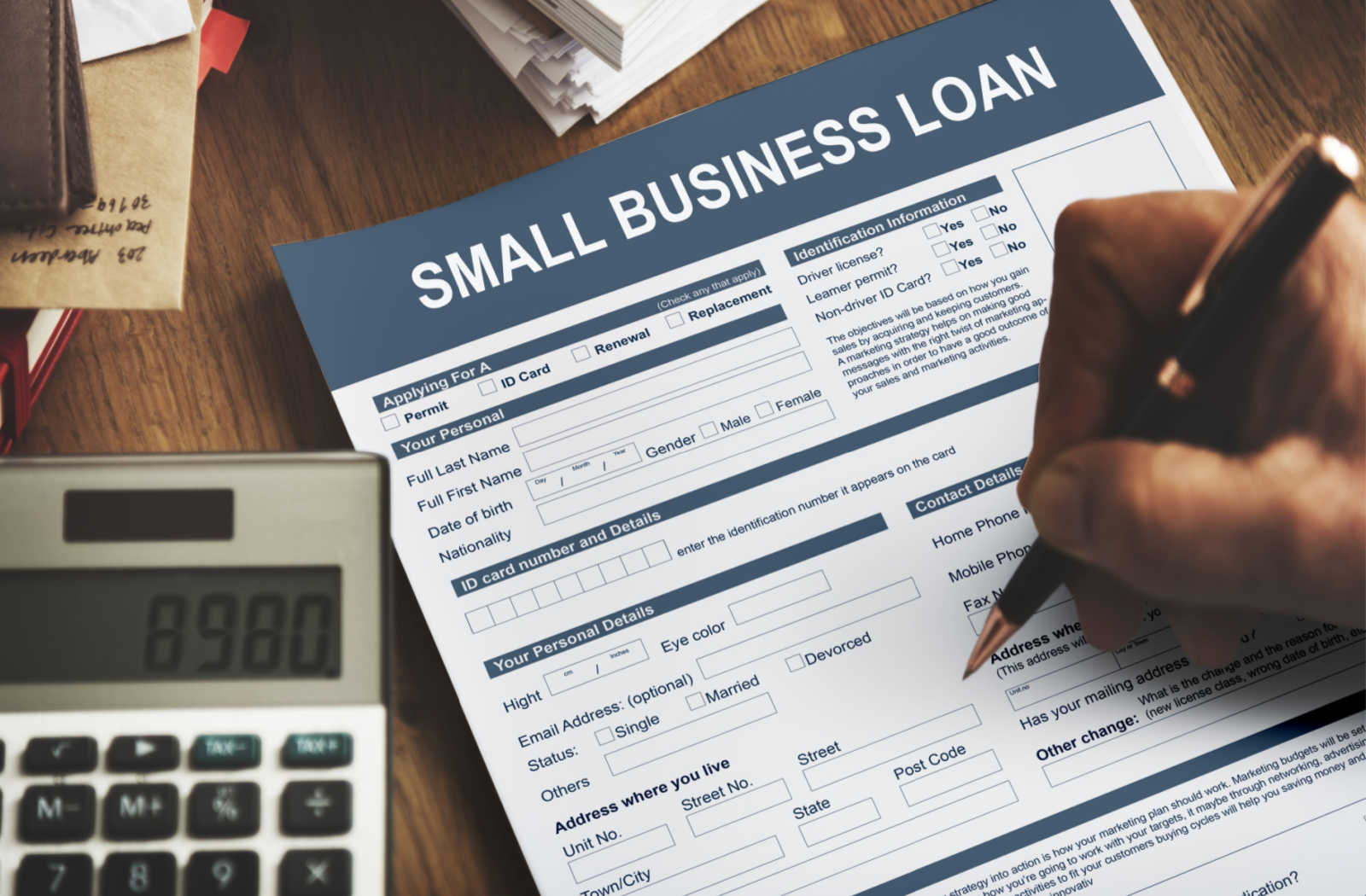Owning a small business can be invigorating and intimidating.
Your success can change on a monthly basis, you can experience peaks and valleys in your revenue, not to mention constant market changes and new competitors at every turn. You shouldn’t have to worry about finances with every change in the economy.
Small business loans can help owners maintain financial stability in their businesses. Our team is here to help explain the process and ensure you fully understand how business loans can benefit you.
What Is a Small Business Loan?
A small business loan is a form of financing provided to business owners for a variety of reasons.
The purpose of a small business loan is based on the needs of the business. These loans help business owners acquire upfront capital to be invested in the business. This could include improving short-term cash flow, expensing necessary renovations, providing salaries, purchasing new technology, and more.
Small business loans can help meet working capital requirements during high and low times in the market. Additionally, these loans can help expand the business to generate more revenues.
Business owners can use loans to strengthen their financial stability and maintain a financial “safety net” if economic conditions negatively affect the business.
Purpose of Small Business Grants
- Poor cash flow: Many businesses have expenses upfront, such as inventory & operating expenses, that a business loan can help cover
- Expensive equipment costs: Loans can help fund expensive equipment to help improve manufacturing & efficiency
- Marketing fees: Small businesses need marketing strategies to attract potential customers & loans can help subsidize these fees until new sales are made
- Staffing: Hiring the right people is necessary to grow the business which loans can help cover during times of expansion
- Emergency funds: Unexpected business expenditures can occur & loans help maintain cash flow during downtimes in business
Types of Small Business Loans
Secured Business Loan
Secured business loans are tied to a business asset which acts as collateral if the borrower (business owner) is unable to meet their repayment obligations. Many borrowers will use vehicles, high-tech equipment, or property as collateral.
Secured loans can be higher amounts with lower interest rates because they are a lower risk liability. If the borrower can’t repay the loan, the lender takes ownership of the related collateral. For example, if you received a secured loan to purchase a company truck and were unable to make the monthly payments, the lender would seize the truck as repayment.
These loans are a great option for making large purchases. A common form of a secured business loan is a mortgage, where the property or building acts as collateral for the borrowed funds.
Unsecured Business Loan
Unsecured business loans are not tied to any assets. These loans can be more difficult to acquire as the lender doesn’t have any collateral, or “safety net,” in the event that the borrower is unable to meet their repayment obligations.
These loans are usually smaller amounts and can have higher interest rates because they are a higher risk liability.
An unsecured loan is a good option for smaller, planned expenses. These loans can help new business owners just starting out generate some meaningful cash flow to help set up their business.
Short-Term Cash Flow
Short-term cash flow loans are not tied to any assets and are designed to assist borrowers (business owners) during lean business periods.
These loans provide quick cash in a pinch. For example, a borrower may need to pay their employees at the end of the month, but they’re still waiting on payments from clients. A short-term cash flow loan can help “tide over” the business until more cash comes in.
How To Apply for a Small Business Loan
1. Calculate the Loan Amount
Before you apply for a business loan, you need to figure out what amount to borrow. You can use a loan calculator to determine the amount required.
You’ll need to know the purpose of your loan, too.
For example, let’s say you operate an accounting practice out of your home and you need an office and another employee to manage your clientele.
The average cost to lease office space in Calgary is $17 per square foot. If you were to lease an office on the smaller side, you would need approximately 80 to 150 square feet per employee. Therefore, the cost of leasing a business office for yourself and one other accountant would be at least $2,720* per month.
You’ll also need to fund your first employee’s monthly salary. The average salary for an accountant in Calgary is $77,317 per year. Therefore, you’d need $6,443 each month for their compensation, not including benefits or CPP and EI contributions.
Lastly, you’ll need to consider the cost of supplying office equipment, utility bills, and insurance. These rates can vary depending on your provider, but assume you budget $15,000 to cover the first 3 months of utilities and the upfront equipment purchases.
If we consider all of these expenses, and you want to have enough cash to cover 3 months of operations, you would need to apply for a loan of (at least) $43,000**. However, because expenses can vary, it’s usually recommended to apply for more than you need as a cushion. So, in our example, your lender may recommend you apply for $50,000.
* Calculation: ($17 per sqft x 80 sqft per employee) x 2 employees = $2720
** Calculation: ($2720 x 3 months) + ($6443 x 3) + $15000 = $42489
2. Develop a Business Plan
Most private money lenders require a business plan in order to process a small business grant application. If you already have a business plan, you’re ahead of the game. However, it’s still a good idea to review and update your business plan before applying for a loan.
Online loans are beginning to grow in popularity, many of which don’t require a formal business plan in the initial application process. However, this could result in higher interest rates depending on how risky these lenders view you as a borrower.
A good business plan clearly outlines your company’s plans for the future and helps lenders evaluate the commercial viability of your business. Regardless of what lender you apply with, having a business plan can improve your chances of approval and will help you clearly move forward with the development of your company.
3. Consider Your Terms
Be realistic about the amount you can afford to pay back to your lender each month.
You’ll want to consider the loan term (how long you have to repay the loan), the interest rate (cost of borrowing), and your monthly payment.
To determine your monthly payments, your lender will consider the following factors:
- Loan type
- Credit history
- Owner’s income
- Business profitability
- Business type & years in business
Small business lenders understand that each business is unique, which is why most lenders offer a variety of loan options to meet each borrower’s specific needs. When considering your repayment terms, keep a few things in mind:
- A longer term will lower your monthly payment amount, but you’ll pay more towards the interest of the loan over time
- Talk to your lender about prepayment & missed or late payment penalties before you sign for your loan
- Choose a loan type that works best for your business cash flow (your lender can help determine this with you)
Understanding Your Credit History
Your credit history is a record of every credit product you have (loans, credit cards, mortgages, phone bills, etc.). This report shows how responsible you are for repaying these debts.
Credit is scored on a scale of 300 to 900. Generally, a score of 660 or higher is considered “good credit.”
If you have good credit, you’re more likely to secure financing with a low interest rate. A credit score of 760 or higher is considered “excellent credit.”
If you have bad credit, you’re less likely to secure financing. If you are approved for a loan, it’s very likely that your monthly payments and interest rate will be significantly higher. A credit score of 560 or lower is considered “poor credit.”
4. Talk to a Business Advisor
Applying for small business grants can be tricky and since it may perform a major credit check, we suggest seeking a business advisor first. Once you have most, if not all, of these steps complete, you should book an appointment with a business advisor.
Your advisor can help you apply for your loan, as well as answer any questions and address any concerns you may have. They are the experts, and they are there to help you.
Don’t be afraid of asking “stupid questions.” These advisors are here to help understand the process and best prepare for taking on this new liability. You need to fully understand your commitment before moving forward, so take your time and ask as many questions as you need.
5. Choose Your Loan Type
Choosing the right type of loan for your business depends on your needs and goals.
- Term loans (secured or unsecured) are typically repaid over a period of 2 – 10 years & are best for more established businesses
- SBA loans (similar to term loans) are designed to offer better terms to borrowers who may struggle to acquire funding & can have terms up to 25 years
- Short- & long-term online loans are preferred for new businesses or businesses with poor credit to access some funding at a shorter term
- Invoice factoring loans are designed for businesses that have long repayment periods with most of their clients
Each business and borrower is different, so discussing the right type of loan with your advisor is always a good idea.
6. Apply for the Loan
Now that all of your preparation is complete, it’s time to apply for your loan. You’ll need to:
- Choose a lender you trust (financial institution, private lenders, online, etc.)
- Prepare all of your documents
- Submit your application
Your advisor can help you prepare for your application.
Documents You’ll Need
To apply for a small business loan, you’ll need:
- Business registration & supporting documentation
- Personal & business financial statements
- Notice of assessment from previous 2 years
- Information about any owners with 20%+ ownership
Depending on your lender, they may ask for additional information. They’ll provide you with a clear list before you apply to ensure you provide the right documentation.
Loans vs. Credit Lines
A small business loan is not the same as a business credit line. A loan is a fixed liability. A line of credit is an open liability.
For example, if you’re approved for a $50,000 business loan, you’ll receive a lump-sum payment of $50,000 upfront. This is a one-time payment that you agree to repay over a certain period of time.
If you’re approved for a $50,000 line of credit, you’ll receive an open credit line for that amount. You can withdraw from and deposit to this line of credit at any time. You’ll only be charged interest on any balances not repaid within 21 – 30 days.
A line of credit is a good option for businesses that are looking for a more flexible borrowing option.
Next Steps
We know this is a lot of information to absorb. Don’t worry, we’re here to help.
We’re money lenders in Alberta and British Columbia. For loans in Edmonton, loans in Calgary, and loans in Vancouver, we can provide you with expert advice.
Contact us today to learn more about how we can help you (and your business) grow and prosper!

